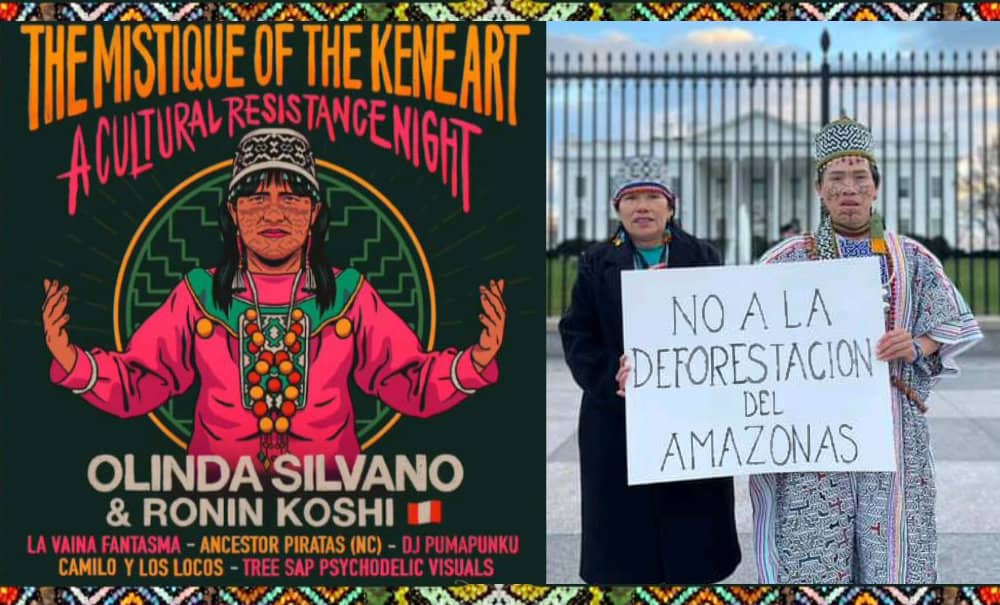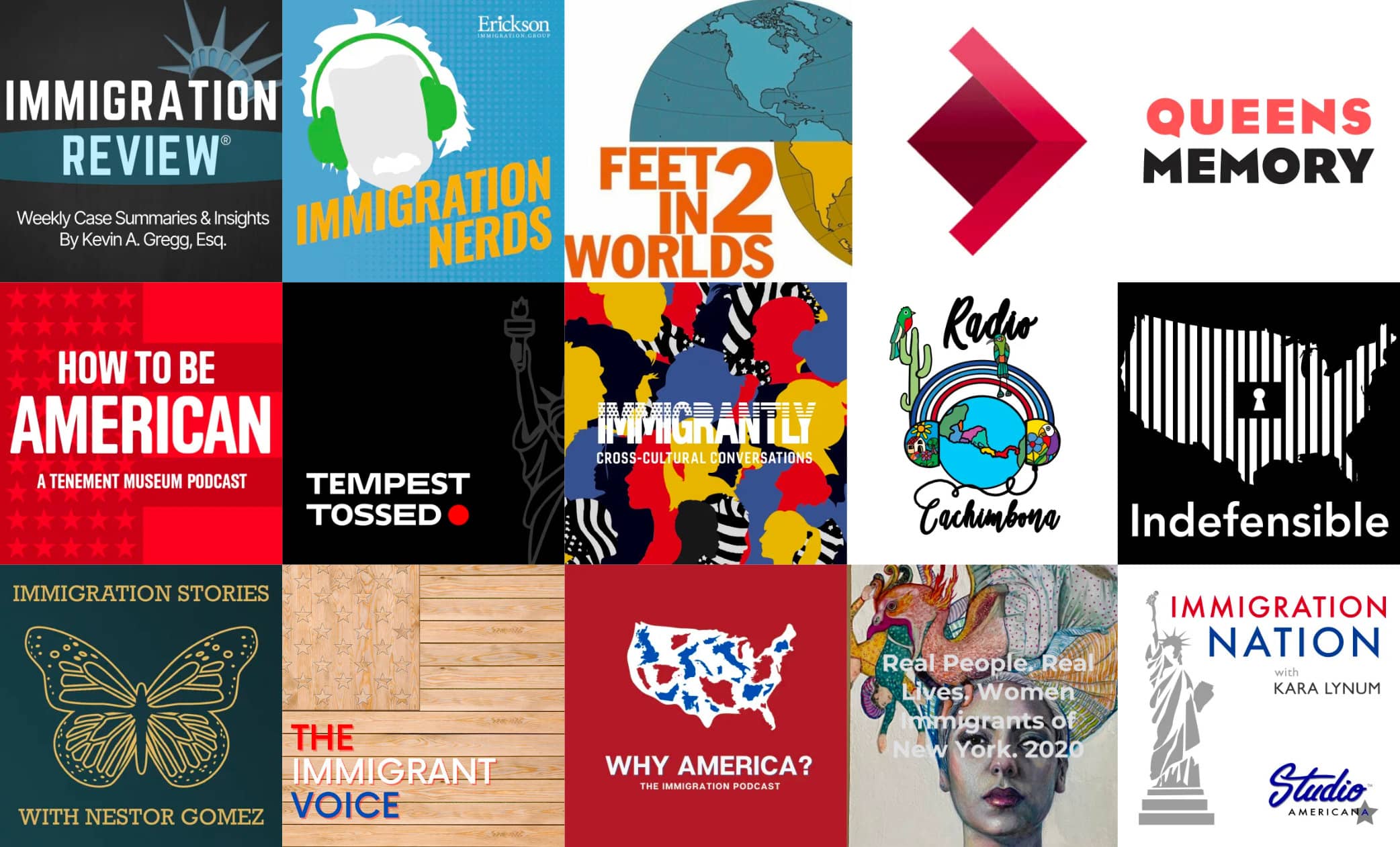
Dear friends,
In troubled, even catastrophic, times we welcome news that brings hope and clarity to the fight for immigrant justice. Today’s newsletter focuses on the important work being done by non-governmental, community-based groups to support new migrant arrivals in New York City. We then turn to an in-depth story of Peruvian artist Olinda Silvano, co-founder of the migrant Shipibo community in Lima, whose indigenous wisdom sparks creative resistance to environmental threats both here and in Peru.
Newsletter highlights:
- Community support for migrant arrivals—Women’s Refugee Commission (WRC) Report
- The art of indigenous ecology: Olinda Silvano of the Shipibo-Konibo Nation
1. Local Community Groups Are Critical to Migrant Support
“Community-based organizations, grassroots advocates, and everyday volunteers have been critical to providing support to people arriving in NYC from the border to seek safety and stability while they go through their immigration process.” —Women’s Refugee Commission
Local community groups are gaining hard-earned recognition for the support they provide to immigrants. WNYC’s radio host Brian Lehrer announced on February 7 that his 2024 Prize for Community Well-Being has been awarded to three groups who welcome migrants to NYC. One of those is the Jackson Heights Immigrant Center, founded by Nuala O’Dougherty-Naranjo, which helps new arrivals apply for asylum and form a community. Another awardee is Power Malu’s Artists Athletes Activists group which JHISN wrote about last year in our June 10 newsletter.
In addition, the Women’s Refugee Commission (WRC) praised the activist group NYC-TLC, the NY Chapter of the national organization Grannies Respond, in its recent report Opportunities for Welcome. The report identifies best practices and lessons learned from groups supporting asylum seekers in NYC, Chicago, Denver, and Portland (Maine). JHISN has previously reported on the work of team TLC-NYC which assists with the arrival of migrants bussed to NYC, and established the Little Shop of Kindness to provide free goods to migrants in need.
The WRC report is a comprehensive examination of the strenuous efforts made to support the thousands of migrants bussed across state lines by Republican governors as a political stunt. These politicians intended to teach a lesson to Democratic-run Sanctuary Cities that declare themselves a safe haven for immigrants. Despite the challenges, 190 cities and counties remain members of the Cities for Action group which advocates for pro-immigrant federal policies and recommends local innovative, inclusive programs and policies instead of vilifying immigrants.
The WRC spoke with over 50 support organizations in building its assessment of the current situation for migrants. Their report highlights the problem of 2 million court cases awaiting review by only 659 immigration judges. They stress that the backlog “leaves people seeking protection and permanency in the US in limbo for years.” It also extends the time that those immigrants cannot work: the 150-day countdown clock for getting work permission does not start until they file an application (p6). WRC states it is time to “end the inaccurate and unserviceable ‘crisis mode’ response to the durable reality of displaced people seeking safety.” (p2)
While Mayor Adams is still requesting more federal funding for migrant services in NYC, this report reveals that our city has so far been the largest recipient of government support: NYC received $106,879,743, Denver was awarded $9,009,328 and Chicago $12,739,273. In looking at how this money was used, WRC identified several problems faced in all four cities:
- Using emergency shelters instead of long-term solutions for housing.
- Leaning on emergency responses that are expensive, unsustainable, and lack transparency.
- Inadequate numbers of Legal Service providers for people seeking protection.
- Some community tensions over new arrivals.
- Incomplete coordination and support from the federal government.
They also identified best practices to address the problems, including leveraging public-private partnerships to offer support; providing rental assistance and establishing private hosting programs for people seeking asylum; and using a community-led case management approach with support services.
WRC’s report concludes with comprehensive recommendations for local, state, congressional, executive branch, and federal departments. Instead of pretending that all will be fine if the border is simply closed, WRC emphasizes the complex breadth of structural and policy changes needed to address current challenges, as well as the terrible effects of five decades of inaction by our politicians to pass any meaningful new immigration laws. Without progressive national immigration reform, local groups have filled a policy vacuum with service.
The WRC report ultimately suggests, as does Brian Lehrer’s recognition of the Well-Being Award recipients, that success comes from kind, supportive, and welcoming community initiatives. These model positive and engaged responses to how immigration can be properly handled.
WHAT CAN WE DO?
- Donate to Grannies Respond/TLC NYC to support its initiatives.
2. Shipibo Resilience and Resistance in DC
“To care and defend is to love, it is to prolong life, it is to combat the extinction of the region as well as its people.” —Ronin Koshi, Cantagallo Shipibo-konibo community, Lima
The fight for environmental justice in Peru was put in the spotlight on January 23. Just a few days after a corrupt and illegitimate Peruvian Congress approved environmentally disastrous modifications to the Forestry and Wildlife Law, Olinda Silvano of the Shipibo-Konibo Nation opened the exhibition, Amazonia: A BioCreativity Hub at the IDB Cultural Center in Washington, DC. Expressing love for her ancestors, her culture, and the jungle, Olinda spoke and sang in her native language, calling for protecting the Amazon and the future of Mother Earth, while her finger ran the lines of the Kené in the mural. It was an apotheotic opening. Ironically, the IDB (Inter-American Development Bank)—whose actions do not preserve or protect the ecosystem of the Amazon—is the group that sponsored Amazonia, which has the stated goal of defending and protecting the jungle.
Indigenous Nations in Peru have faced serious threats for decades from settlers or land traffickers. These outsiders illegally cut down cedar forests and take over Indigenous territory. The newly revised law will now allow these traffickers to change land use without carrying out a land classification study to determine if they are suitable for agricultural or forestry use. A preliminary report will no longer be necessary to authorize a forest to be cut down to become agricultural land.
Every year 150,000 hectares of virgin forest are lost in Peru, endangering the sustainable management of forest resources and the protection of ecosystems. Now, a new European Union law that prohibits imports of coffee, cocoa, beef, soy, and palm oil that have been obtained illegally from deforested forests has become a threat to forest profiteers. That is why Peru’s congress acted so swiftly to change the law. By formally legalizing predatory practices, they are protecting the profits of the export companies.
Another danger that threatens the jungle is illegal mining. The industry’s chemicals and destructive methods have seriously contaminated the region’s land and rivers. The Integral Registry of Formalization (Reinfo) was organized in 2017 to regulate small and artisanal mining. Although it was supposed to go into effect in 2020, a corrupt Congress has kept extending the deadline. Meanwhile, a proposed “reform” bill would further weaken registration provisions.
The new legislation legalizes deforestation and degradation of Amazonian forests and ruthlessly violates the prior consultation with Indigenous peoples. It was approved through an irregular process, being opposed by Indigenous organizations, academia, and a significant majority of Peruvians.
Olinda Silvano, who arrived in Washington with her son Ronin Koshi, showed us that the struggle to preserve our environment can and must be fought in all forums. She spoke with the wisdom imparted by her elders, insisting that the love of nature, of animals, of rivers, are the only guarantees of avoiding a climate catastrophe.
The Shipibo people, who live on the banks of the Ucayali River, are one of the most numerous nations in the Peruvian Amazon. People like Olinda are said to have been shown the crown of inspiration. She is one of the founders of the migrant Shipibo settlement in Lima on the right margin of Rimac river, now called the Cantagallo community. She’s a leader, muralist, and lecturer, who has shown her art and her knowledge in several cities in Europe, Russia, and in recent years in North America.
In the IDB gallery exhibition, Olinda’s 24-foot-long mural was the center of attention. It reflects the kené, which refers to traditional designs painted by women and men on ceramics, textiles, wooden surfaces and on the bodies of the Shipibo-Konibo people. Kené is made by drawing geometric patterns that express the Shipibo worldview and spirituality; it indicates identity, beauty and quality.
The Peruvian communities of Washington, DC, Maryland, and Virginia (DMV) mobilized to disseminate Olinda’s work and message through local workshops and exhibitions. Prior to the workshops Olinda, with the help of Ronin, drew up the designs that we were going to paint; they made straight lines, curves, geometric figures, perfect circles, all came from Olinda’s ancestral wisdom and were applied directly to a piece of tocuyo (raw cotton). Every participant with a stick or brush used paint prepared with cedar and other plants to color the design. After it dried, mud from her town Paohyan (Shell Lake) in Ucayali was applied to fix the color. With the accompaniment of Olinda’s songs and stories, and with the tapestry, ceramics, bracelets and earrings around us, an atmosphere of a Shipibo community was created during the workshop. Olinda told us how she received kené art, her training with plants, her decision to take the art with her; she shared her migration story and her significant work of cultivating and keeping the Shipibo-Konibo Nation alive through kené.
Indigenous people continue to sacrifice their lives to defend the forests and rivers of the jungle. Thirty-three environmental defenders have been murdered in the last decade. It is urgent to protect Indigenous leaders. Indigenous artists like Olinda, with her unconditional dedication and love for her ancestral Amazonian culture, help raise awareness of an ecosystem as important as the Amazon in order to protect it, defend it, and fight for legislation that preserves it.
WHAT CAN WE DO?
- The Amazon is also at risk in Ecuador, sign the petition.
- If you are in Washington DC, visit Amazonia: A BioCreativity Hub at the IDB Cultural Center, on view through September 30, 2024. Or check out the virtual exhibit.
In solidarity and with collective care,
Jackson Heights Immigrant Solidarity Network (JHISN)
Follow @JHSolidarity on Facebook and Twitter and share this newsletter with friends, families, neighbors, networks, and colleagues so they can subscribe and receive news from JHISN.
